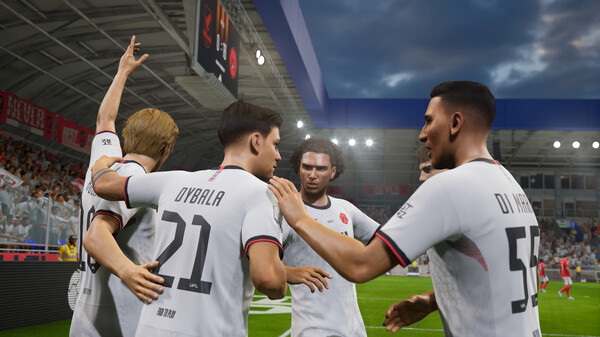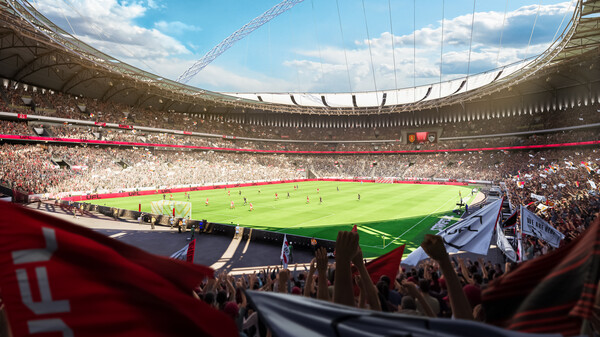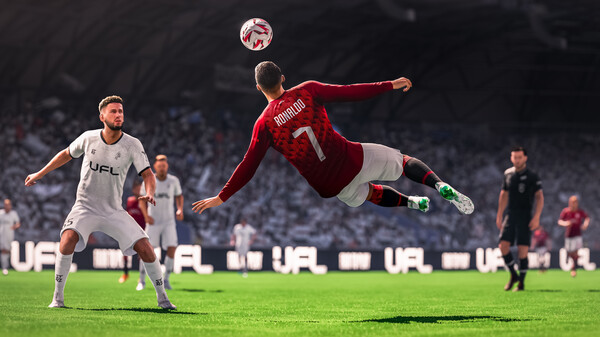Popular Now
Introduction
When UFL™ was first announced in 2021 as a "fair-to-play" football simulator aiming to rival FIFA and eFootball, fans of the genre were intrigued. Promising no pay-to-win mechanics and focusing on pure skill, it stood as a beacon of hope. However, nearly four years since its announcement, UFL™'s evolution of core gameplay mechanics — from player control responsiveness to tactical depth — has been painfully slow. This article delves deeply into the evolution (and lack thereof) of UFL™’s gameplay systems, the reasons behind the delays, and how this has impacted player trust and competitive integrity.
The Hype and Initial Vision (2021–2022)
UFL™'s reveal trailer launched with cinematic flair, showcasing crisp visuals, real-life player scans, and an ambitious mission: to create a skill-based football game that didn’t rely on microtransactions. This resonated with players disillusioned by FIFA’s Ultimate Team grind and eFootball’s erratic redesign. Fans were excited about something different — a game made by developers who were also players.
However, beyond the trailer, concrete gameplay footage and technical details were sparse. The developers at Strikerz Inc. communicated through optimistic social media posts and occasional dev diaries, but there was little tangible evidence of how the game would function moment-to-moment on the pitch. The vision was there, but execution remained unseen, setting the stage for what would become a pattern of overpromising and under-delivering.
First Hands-On Impressions and Concerns (2022)
Early community playtests and closed demos began in mid-2022, and they revealed a critical issue: the core gameplay felt clunky. While the graphics were adequate and player likenesses visually striking, the responsiveness of controls lagged. Animations were sluggish, tackles felt weightless, and player movement lacked fluidity. Most crucially, there was a noticeable delay between button input and on-screen action, which shattered the illusion of control — the very heart of any sports simulator.
Players voiced these concerns through forums and YouTube reviews. The developers acknowledged the feedback but attributed many of the issues to pre-alpha status. They promised rapid iteration, emphasizing their commitment to community-driven development. Yet, this marked the beginning of UFL™’s long struggle to balance vision with viable gameplay fundamentals.
Gameplay Foundation: Movement and Responsiveness

Input Lag and Animation Lock
By 2023, UFL™ had made some improvements, but key foundational problems persisted. Chief among them was the lack of responsiveness during critical gameplay moments — shooting, passing under pressure, and player switching all suffered from input lag. The presence of animation locking (where players are trapped in an animation and can’t respond to new inputs) was reminiscent of FIFA 15-era issues.
Comparative Weakness Against Competitors
When compared to FIFA 23 or even eFootball 2023, UFL™ lagged far behind in terms of player fluidity. While EA and Konami had years of refinement under their belts, UFL™ seemed stuck in a beta loop, with animations that looked fine in isolation but didn’t blend well in actual play. This disconnect created a mechanical stiffness that undermined the supposed “skill-first” philosophy of the game.
Defensive AI and Positioning Issues
One of the most critical and frustrating issues in UFL™ remains its defensive AI. Players frequently report erratic positioning, inconsistent tackling mechanics, and defenders who often leave gaping holes without provocation. This isn’t just a matter of difficulty settings — it’s a systemic issue tied to the engine’s behavior trees for off-ball players.
AI defenders don’t track runs effectively, fail to close down space properly, and often backpedal instead of pressing, leaving manual defending as the only option. But with sluggish player switching and delayed commands, manual defending becomes a gamble. The result is a defensive experience that feels frustratingly out of the player’s control — a death sentence in a competitive title.
Attacking Logic and Movement Predictability
Lack of Dynamic Movement
On the attacking side, player movement feels too scripted. Wingers rarely make intelligent diagonal runs, and midfielders fail to support play with real-time adjustments. There is a lack of spatial awareness from attackers that makes build-up play feel repetitive and mechanical.
No False Runs or Decoys
Unlike FIFA or PES, where players now make false runs or act as decoys dynamically, UFL™'s attackers seem stuck on rails. This lack of improvisational logic severely limits creativity, forcing players into a narrow meta defined by predictable pass chains and over-reliance on individual dribbling.
Dribbling and Collision Detection Problems
Dribbling mechanics, which should have been a high point in a skill-based football sim, are underdeveloped. The dribble controls feel floaty, with players often skating across the pitch. There’s an unnatural lack of friction in player movement, which removes the weight and presence of physical play.
More importantly, collision detection remains wildly inconsistent. Players will often pass through each other without realistic contact, and tackles that should result in fouls or possession changes are ignored entirely. This undermines any sense of fairness and realism, making competitive play deeply unsatisfying.
Stamina, Momentum, and Physics Imbalance
Stamina System Oversights
Another undercooked system is stamina management. UFL™ promised dynamic stamina draining that rewards strategic pacing, but in practice, players can often sprint the full 90 minutes without consequence. The system fails to impact tactical decisions, making player rotation and match tempo irrelevant.
Momentum Swings and Physics Engine
Additionally, the in-game momentum feels artificial. Matches often feature bizarre shifts in control where one team suddenly becomes unstoppable. Combined with a floaty physics engine that doesn’t model inertia or physical contact convincingly, this breaks immersion and consistency — essential in a game selling itself on fairness.
Career and Custom League Depth: Neglected Innovation

While much of the discussion around UFL™ focuses on moment-to-moment gameplay, another major letdown is the lack of meaningful offline modes. The Career Mode remains skeletal, lacking real transfer dynamics, player development, and press interaction.
Custom leagues and tournaments — often a playground for community creativity — are limited by rigid structures and lack of advanced customization. Fans who hoped UFL™ would rival the Manager Mode of classic FIFA or Master League from PES were sorely disappointed. This failure to innovate on these fronts weakens UFL™’s long-term engagement strategy.
Server Stability and Online Input Lag
Unstable Servers
Even when local gameplay feels somewhat improved, the online infrastructure negates those gains. UFL™ servers are unstable, with frequent disconnects, rubber-banding, and matchmaking errors. This not only disrupts play but undermines trust in the game’s competitive modes.
Input Delay in PvP Matches
Input lag is significantly worsened in online matches. What might feel like a 0.2s delay in offline play balloons to over 0.5s in ranked games. In a football sim that claims to champion skill-based competition, this is catastrophic. Reactions, counters, and tactical setups become meaningless when inputs don’t reflect actions in real time.
Developer Communication and Community Response
Strikerz Inc. has been open about delays and honest about some shortcomings, but this transparency only goes so far when core issues remain unaddressed. Community trust has eroded with each missed milestone and lackluster patch. Promises of “big updates” often yield marginal improvements or cosmetic features rather than fundamental fixes.
Content creators and streamers who once championed the game have become critical. Reddit threads and Discord servers are filled with long-time supporters expressing disappointment. This shift in sentiment has slowed the community's growth and led to fears that UFL™ may never escape development purgatory.
Future Outlook: What Must Be Done to Recover

Roadmap for Gameplay Overhaul
To regain momentum, UFL™ must prioritize a fundamental gameplay overhaul. This means rewriting core systems: improved animation blending, real physics modeling, smarter AI behavior, and fully responsive controls. Without this, no amount of marketing or licensed content will matter.
Transparency, Beta Cycles, and Feedback Integration
The developers must also implement a robust feedback loop with the community. Structured beta cycles with measurable performance goals, transparency in patch notes, and actionable developer blogs will help restore faith.
Moreover, UFL™ should delay additional content plans (e.g., kits, stadiums) and focus entirely on making the core game “feel right.” Only then can it begin to rival the polish of FIFA or the legacy of PES.
Conclusion
UFL™ started with immense promise: a free-to-play, fair, skill-based football sim meant to break the hegemony of FIFA and eFootball. But its journey has been marred by slow gameplay evolution, clunky controls, and poor AI — foundational flaws that threaten its survival. As of mid-2025, its core mechanics still feel half-baked, and the community is growing impatient.
To succeed, UFL™ must return to basics. It must make player control responsive, AI intelligent, and matches tactically deep. Without this transformation, no marketing campaign or star ambassador will save it. In football, as in game development, it’s the performance on the pitch that counts.


















